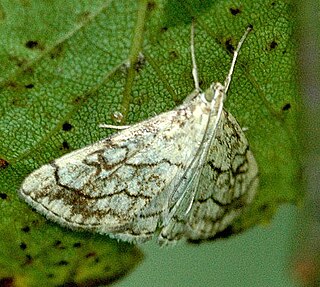
Evergestinae is a fairly small subfamily of the lepidopteran family Crambidae, the crambid snout moths. The subfamily was described by H. Marion in 1952. It contains roughly 140 species on all continents and continental islands. Evergestine moths resemble Pyraustinae; however, the male genitalia have a long uncus and long, slender gnathos. The larvae feed mostly on Brassicaceae.

Evergestis is a genus of moths of the family Crambidae described by Jacob Hübner in 1825. A number of species are pests, including the cross-striped cabbageworm, a pest of cole crops such as cabbage.

Udea is a genus of snout moths in the subfamily Spilomelinae of the family Crambidae. The genus was erected by Achille Guenée in 1845. The currently known 216 species are present on all continents except Antarctica. About 41 species are native to Hawaii.
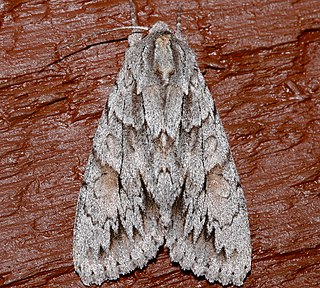
Andropolia theodori is a moth in the family Noctuidae first described by Augustus Radcliffe Grote in 1878. It is found in the eastern parts of North America, from British Columbia, south to California.
Evergestis angustalis is a moth in the family Crambidae. It was described by William Barnes and James Halliday McDunnough in 1918. It is found in North America, where it has been recorded from California and Arizona.
Evergestis borregalis is a moth in the family Crambidae. It was described by Eugene G. Munroe in 1974. It is found in North America, where it has been recorded from California and New Mexico.
Evergestis comstocki is a moth in the family Crambidae. It was described by Eugene G. Munroe in 1974. It is found in North America, where it has been recorded in California and Oregon.
Evergestis obliqualis is a moth in the family Crambidae. It was described by Augustus Radcliffe Grote in 1883. It is found in North America, where it has been recorded from Arizona, California, Colorado, New Mexico, Texas and Utah.
Evergestis palousalis is a moth in the family Crambidae. It was described by Eugene G. Munroe in 1974. It is found in North America, where it has been recorded from Alberta, British Columbia, California, Colorado, Nevada, Oregon and Utah.
Evergestis simulatilis is a moth in the family Crambidae. It was described by Augustus Radcliffe Grote in 1880. It is found in North America, where it has been recorded from Alberta, Arizona, British Columbia, California, Colorado, Montana, Nevada and New Mexico.
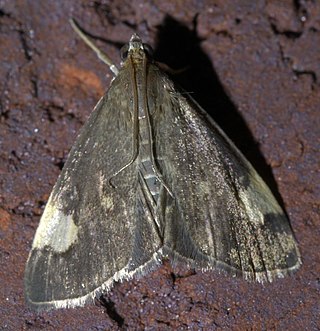
Evergestis unimacula, the large-spotted evergestis moth, is a moth in the family Crambidae. It was described by Augustus Radcliffe Grote and Coleman Townsend Robinson in 1867. It is found in North America, where it has been recorded from Georgia, Illinois, Indiana, Iowa, Maryland, Michigan, North Carolina, Ohio, Oklahoma, Ontario, Pennsylvania, Quebec, Tennessee and West Virginia. Outliers have been recorded from Florida.
Evergestis vinctalis is a moth in the family Crambidae. It was described by William Barnes and James Halliday McDunnough in 1914. It is found in North America, where it has been recorded from Alberta, Arizona, British Columbia, California, Colorado, Kansas, Montana, Nevada, New Mexico, Texas and Wyoming.
Loxostege anartalis is a moth in the family Crambidae. It was described by Augustus Radcliffe Grote in 1878. It is found in North America, where it has been recorded from coast to coast in Canada. In the west, the range extends south to California.
Loxostege sierralis is a moth in the family Crambidae. It was described by Eugene G. Munroe in 1976. It is found in North America, where it has been recorded from British Columbia, Saskatchewan, Washington, Utah, Oregon and California.

Ostrinia penitalis, the American lotus borer, is a moth in the family Crambidae. It was described by Augustus Radcliffe Grote in 1876. It is found from Mexico, through Central America to Amazonas, Brazil. It is also found in North America, where it has been recorded from Quebec to British Columbia and most of the United States. The habitat consists of marshes and pondsides.

Pyrausta nicalis is a moth in the family Crambidae. It was described by Augustus Radcliffe Grote in 1878. It is found in North America, where it has been recorded from Quebec west to British Columbia, south to Colorado, Utah, Nevada and California.
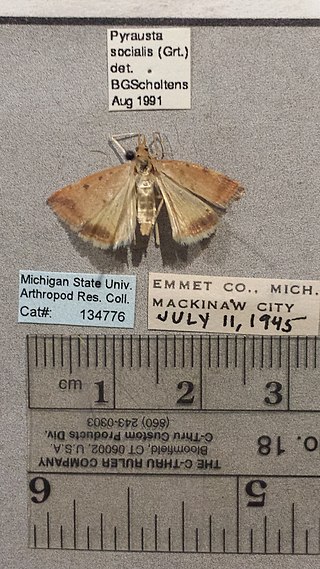
Pyrausta socialis, the sociable pyrausta moth, is a moth in the family Crambidae. It was described by Augustus Radcliffe Grote in 1877. It is found in North America, where it has been recorded from Ontario west to British Columbia, south to Montana and Colorado.

Udea itysalis is a moth in the family Crambidae. It was described by Francis Walker in 1859. It is found in North America, where it has been recorded from British Columbia to Quebec, south to Colorado, California, Nevada and Arizona. It has also been recorded from the Sayan Mountains in Russia.
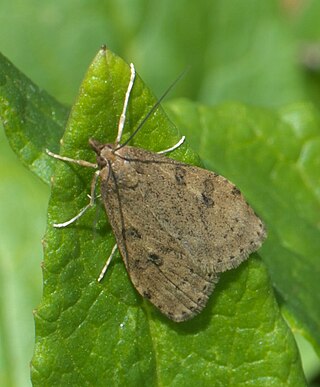
Udea turmalis is a moth in the family Crambidae. It was described by Augustus Radcliffe Grote in 1881. It is found in North America, where it has been recorded from Alberta, Arizona, British Columbia, California, Colorado, Idaho, Manitoba, Montana, Nevada, New Mexico, Utah and Washington.
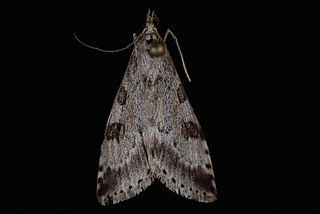
Udea washingtonalis, the Washington udea moth, is a moth in the family Crambidae. It was described by Augustus Radcliffe Grote in 1882. It is found in North America, where it has been recorded from Alaska, British Columbia, California, Montana and Washington.










